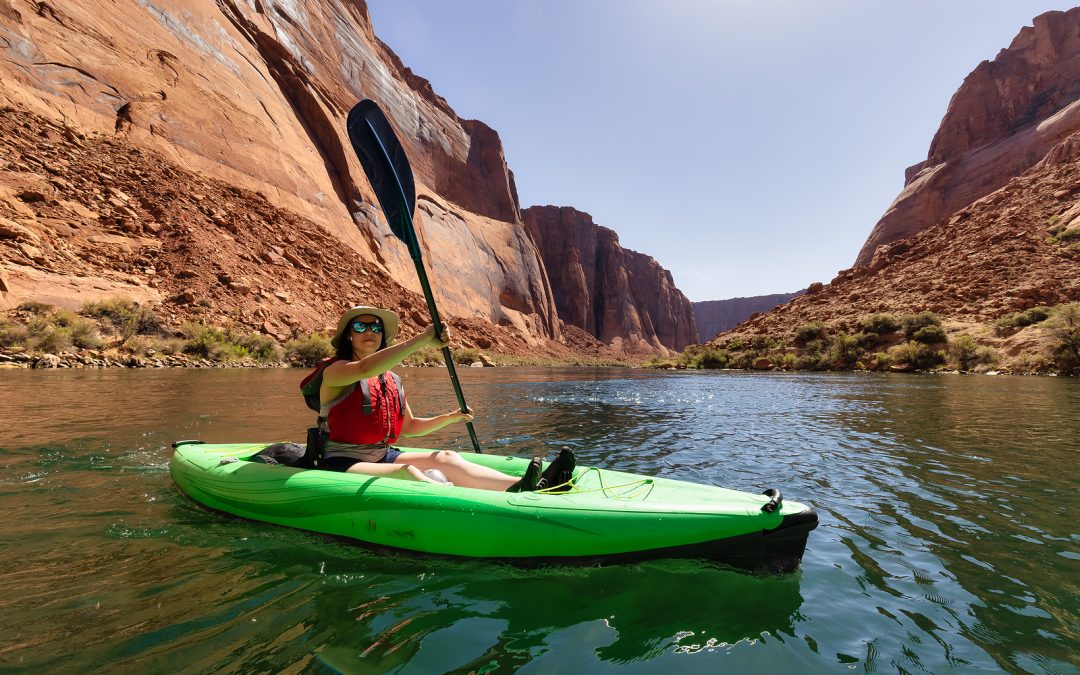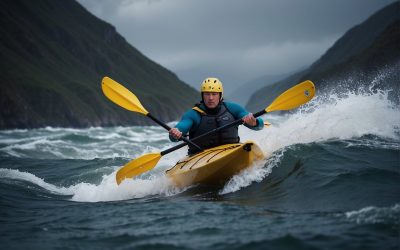Kayak seats play a big role in comfort on the water.
Many paddlers wonder if they can use any seat in their kayak.
Kayak seats are not universal, as they need to fit the specific type and size of kayak you have.

Different kayaks have various mounting points and cockpit sizes. This affects which seats will work.
Sit-on-top kayaks often use different seats than sit-inside models. The seat must match your kayak’s design to attach properly and provide good support.
When choosing a new kayak seat, you need to check if it’s made for your kayak type.
You should also look at the seat’s size and how it attaches.
Some seats work with many kayaks, while others are made for certain brands or models.
Picking the right seat can make your time on the water much more fun.
Key Takeaways
- Kayak seats are not one-size-fits-all and must match your kayak type
- The right seat improves comfort and support while paddling
- Check seat compatibility with your kayak before buying
Understanding Kayak Seats

Kayak seats play a crucial role in comfort and performance while paddling. They come in different styles and offer various levels of support and adjustability. Compatibility with different kayak types is also an important factor to consider.
Types of Kayak Seats
Basic kayak seats are often flat foam pads that provide minimal support. These are common in entry-level kayaks but may not be ideal for long trips.
Upgraded kayak seats offer more support and features. They typically have a backrest and cushioned bottom. Some models include extra padding, adjustable straps, and storage pockets.
High-end kayak seats focus on ergonomics and comfort. These may have contoured shapes, lumbar support, and multiple adjustment points. They’re designed for long paddling sessions and rough water conditions.
Inflatable kayak seats are lightweight and portable. They work well with inflatable kayaks and can be easily deflated for storage.
Kayak Seat Compatibility
Many kayak seats are designed to fit a range of kayak models. These universal kayak seats typically use adjustable straps to secure them in place.
Some kayaks have specific mounting points for seats. These may require brand-specific seats or adapters for aftermarket options.
Sit-on-top kayaks often use different seat designs than sit-inside models. It’s important to choose a seat that matches the kayak type.
When upgrading a kayak seat, paddlers should check the dimensions and attachment methods. This ensures a proper fit and secure installation.
Factors Affecting Seat Universality

Kayak seat universality depends on several key elements. These factors determine whether a seat will fit and function properly in different kayak models.
Kayak Design Variations
Kayak designs vary widely, impacting seat compatibility. Sit-on-top kayaks often have more flexible seating options. Sit-in kayaks have specific cockpit shapes that limit seat choices.
Recreational kayaks typically have wider, more open designs. This allows for easier seat installation. Racing or touring kayaks have narrower builds, restricting seat options.
Some kayaks have molded-in seat wells. These preset areas may only fit certain seat types. Others have flat deck areas, offering more versatility in seat placement.
Attachment Systems
Seat attachment methods play a crucial role in universality. Many kayaks use clip or snap systems for quick seat installation. Others rely on straps or bungee cords for secure fastening.
D-rings and mounting points are common in kayaks. These allow for various seat attachments. Some kayaks have rail systems, enabling sliding seat adjustments.
Permanent mounting options exist for custom fits. These may involve drilling holes or using existing screw points. Such methods limit seat interchangeability but provide stability.
Seat Dimensions and Adjustability
Seat size and shape greatly affect fit across kayak models. Width is a key factor, as seats must match the kayak’s dimensions.
Height adjustability can improve comfort and performance.
Backrest height varies among seats. Taller backrests offer more support but may not fit all kayak designs. Adjustable backrests increase versatility across kayak types.
Seat cushion thickness impacts both comfort and fit. Thicker cushions provide more padding but may raise the paddler too high. Some seats offer removable cushions for customization.
How to Determine Kayak Seat Compatibility
Kayak seats are not universal. To check if a seat will fit your kayak, follow these steps:
- Measure your kayak’s cockpit dimensions
- Check the seat’s specifications
- Look for mounting points
First, measure the width and length of your kayak’s seating area. Compare these to the seat’s dimensions.
Next, review the seat’s product details. Look for mentions of compatible kayak models or styles. Some seats are made for specific brands or kayak types.
Examine your kayak’s mounting points. Kayak seats often attach using straps or clasps. Make sure your kayak has suitable attachment points.
Consider the seat height. Some upgrades can raise the seat by 2 inches or more. This may affect stability and paddling comfort.
Check weight capacity. Ensure the seat can support your weight plus any gear you’ll carry.
Lastly, think about your kayak’s purpose. Fishing kayaks may need different seats than touring kayaks. Choose a seat that matches your kayaking style.
Popular Kayak Seat Brands and Models

Kayak seats come in a variety of styles from different manufacturers. Some focus on comfort for long trips, while others prioritize back support or compact designs. Brand features can vary widely in terms of materials, adjustability, and extra storage options.
OEM vs Aftermarket Kayak Seats
OEM (Original Equipment Manufacturer) kayak seats are those that come standard with a kayak. They’re designed to fit specific models but may lack advanced features.
Aftermarket seats offer more options for customization.
Popular brands include Ocean Kayak and WOOWAVE. These seats often provide better back support and padding.
Some aftermarket seats work with multiple kayak types. The Surf to Summit GTS Expedition seat, for example, fits many sit-on-top kayaks. It uses molded foam for comfort on long trips.
Brand-Specific Seat Features
Different brands focus on unique features to stand out.
The Ocean Kayak Comfort Tech seat is lightweight at 1.75 pounds. It has a tall backrest for extra support.
KERCO Angler-x seats include adjustable straps. This allows paddlers to customize the fit. Some models from Leader Accessories come with detachable storage bags.
BKC seats use multiple padded panels. These target support for different body areas, including the lower back. This design can help paddlers with back pain stay comfortable longer.
Installation and Modification of Kayak Seats
Putting in a new kayak seat or changing an existing one can make paddling more comfy. There are some key steps to follow and things to think about when working on kayak seats.
DIY Seat Installation Tips
Start by taking off the old seat if there is one.
Line up the new seat with the mounting holes on the kayak. Put bolts through these holes and tighten them with nuts.
Check that the seat is secure before using it.
For seats with straps, find the clasps and attach them to the mounting points on each side of the kayak.
Weave the straps through the slots to keep everything in place. Make sure all straps are tight but not too tight.
Test the new seat on land first. Sit in it and move around to see if it feels stable. Adjust straps or bolts as needed for the best fit.
Seat Modification Considerations
Think about the seat height when making changes. Some kayakers like to sit higher for better visibility and casting. Seat risers can add about 2 inches of height in some kayaks.
Look at the seat’s padding and support. Extra cushioning can make long trips more pleasant. But too much padding might affect how the kayak handles in the water.
Check if the seat back can be adjusted. A good backrest helps with comfort and paddling form. Some seats let you change the angle to fit your body better.
Make sure any changes don’t mess with the kayak’s balance. Big seat mods can change how the kayak sits in the water. Always test modifications in calm, shallow water first.
Maintenance and Care for Kayak Seats

Kayak seats need regular care to stay in good shape.
Clean them after each use with fresh water and mild soap. This removes salt, sand, and dirt that can wear down the material.
Dry seats completely before storing. Mold and mildew grow in damp places, so let seats air out fully. Use a soft cloth to wipe away excess water.
Check straps and buckles often. Look for signs of wear or damage. Replace worn parts to keep seats secure.
Tighten loose straps to prevent seats from shifting during paddling.
Apply UV protectant to seats made of fabric or foam. Sun damage can weaken materials over time. Reapply protectant every few months during heavy use.
Store seats in a cool, dry place when not in use. Avoid leaving them in direct sunlight for long periods. This helps prevent fading and material breakdown.
Inspect seats before each trip. Look for tears, loose stitching, or broken parts. Fix small issues right away to prevent bigger problems later.
Consider using a seat cover for extra protection. Covers shield seats from sun and weather when kayaks are stored outside.
With proper care, kayak seats can last for many years. Regular maintenance keeps them comfortable and safe for all your paddling adventures.
Evaluating Kayak Seat Comfort and Support
Kayakers need to consider several factors when evaluating seat comfort and support.
A good kayak seat should provide proper back support and cushioning for extended periods on the water.
The back height of a kayak seat is crucial. Taller backrests offer more support but may limit mobility.
Shorter ones allow for easier movement but provide less back support.
Padding thickness and material affect comfort levels. Dense foam or gel padding can reduce pressure points during long paddling sessions.
Adjustability is key for a personalized fit. Look for seats with adjustable straps to modify the backrest angle and seat position.
This helps kayakers find their ideal paddling posture.
Breathability prevents overheating on warm days. Mesh panels or ventilated designs allow air circulation and moisture wicking.
Durability matters for long-term use. Water-resistant materials like nylon or polyester stand up well to regular exposure to moisture.
Some popular features to consider:
- Integrated storage pockets
- Reflective patches for visibility
- Non-slip bottom surface
- Quick-drying materials
When testing a seat, kayakers should simulate paddling motions to check for any restrictions or discomfort.
A comfortable kayak seat can greatly enhance the paddling experience and prevent fatigue on longer trips.
Frequently Asked Questions

Kayak seats come in various styles and designs to suit different needs. Comfort, support, and compatibility are key factors to consider when selecting a seat for your kayak.
What factors should be considered when choosing a seat for a sit-on-top kayak?
When choosing a seat for a sit-on-top kayak, compatibility with your kayak model is crucial. Check the seat’s dimensions and mounting system to ensure a proper fit.
Look for seats with adjustable straps and durable materials that can withstand exposure to water and sun.
How do I replace the seat on a kayak?
To replace a kayak seat, first remove the old seat by unfastening its straps or bolts.
Position the new seat in the same location.
Secure the new seat using the provided straps or attachment system. Make sure all straps are tight and the seat is firmly in place before use.
What are the best options for kayak seats with back support?
Kayak seats with high backrests provide excellent support for longer paddling sessions. Look for seats with thick padding and adjustable lumbar support.
Some popular options include seats with multiple padded panels that support both the legs and torso.
Which seats are recommended for a fishing kayak?
Fishing kayak seats should offer comfort for long hours on the water. Look for seats with extra storage pockets for tackle and gear.
Seats with higher backs are often preferred by anglers as they provide more support during extended fishing trips.
What are the considerations for buying a kayak seat cushion?
When buying a kayak seat cushion, consider the material’s water resistance and durability. Look for cushions made from quick-drying foam or neoprene.
The cushion should fit your kayak’s dimensions and provide enough padding for comfortable seating during long paddling sessions.
What should I look for in a seat when shopping for an ocean kayak?
For ocean kayaking, look for seats with excellent water drainage to prevent sitting in pooled water.
Corrosion-resistant hardware is essential to withstand saltwater exposure.
Choose a seat with strong attachment points to keep you secure in rough waters.
High-back seats can provide extra support in choppy conditions.










